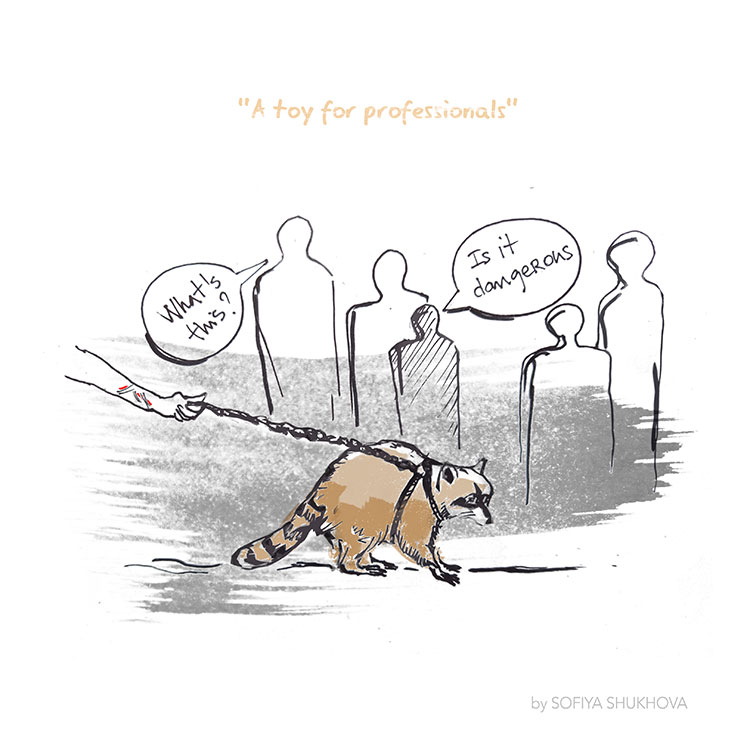
The wildlife trade is a controversial topic, with issues such as the use of endangered animals in traditional medicine and wet markets spreading zoonotic diseases frequently making the news, especially since the outbreak of Covid-19. The exotic pet trade, however, attracts far less attention, despite the fact that it also contributes to the extinction of endangered wildlife.
Sofiya Shukhova, who completed an MSc in Conservation and International Wildlife Trade last year at the Durrell Institute of Conservation and Ecology (DICE), and Professor of Conservation and Applied Economics, Douglas MacMillan, have co-authored an article summarising Sofiya’s research from the first-ever study looking into the motivations of exotic pet owners in Russia. The study, titled ‘From tigers to axolotls: Why people keep exotic pets in Russia’, saw Sofiya interviewing 27 owners of exotic pets such as the Bengal slow loris (Nycticebus bengalensis), the alligator snapping turtle (Macrochelys temminckii), the endangered tiger (Panthera tigris) and the critically endangered axolotl (Ambystoma mexicanum).

The owners were then classified into four different groups depending on their individual motivations and reasoning for owning the exotic pets. These groups are titled Life-savers, Accidental Owners, New Experience Seekers and Collectors. The Life-savers category are owners who take pity on animals in threatening conditions such as fur farms, unethical pet shops and zoos, buying them in order to save them from harm or even from being euthanised. The Accidental Owners are those who were given the pets as gifts or inheritance unexpectedly. Those in the New Experience Seekers category buy or adopt their pets simply because they are interested in owning an unusual, exotic animal. Finally, the Collectors are those who own a vast number of animals, each chosen due to their specific attributes and characteristics.
The reasoning for purchase of the exotic animals, the choice of species, the knowledge of animal husbandry and the understanding of the legal side of exotic animal ownership varies for each of the four types of owner. Sofiya divulges that she “did not expect that the exotic pet owners in Russia would be so enthusiastic about participating in our research and sharing their motivations and practices. I hope that our study will trigger more social science and conservation research in Russia as, for now, this country is still under-represented in the international academic literature.”

The study’s findings provide new and vital information and typology for many different stakeholders – for example, the policy makers and law enforcement agencies – and aims to predict the policy implications of the exotic pet trade in Russia. Being the first study of its kind, it also provides a background for further research into Russia’s exotic pet trade.
Summarising her research, Sofiya said, “Our findings show that the pet owner community in Russia consists of people with various motivations for pet ownership. We urge the stakeholders aiming to address the exotic pet trade in Russia to use our typology to engage each pet owners’ type in a different manner, instead of painting all of them with the same brush. After all, correctly identifying and segmenting your target audience is an essential step to a successful behaviour-change intervention.”
From tigers to axolotls: Why people keep exotic pets in Russia by Sofiya Shukhova and Douglas C. MacMillan has been published in People and Nature (https://doi.org/10.1002/pan3.10125)
!["Fruit bats are way cooler [...] they can actually live at home" - Illustration by Sofiya Shukhova featuring two bats hung out on a clothes line.](http://blogs.kent.ac.uk/sac-news-events/files/2020/07/SS-DCM-illustration-3_12June2020.jpg)




